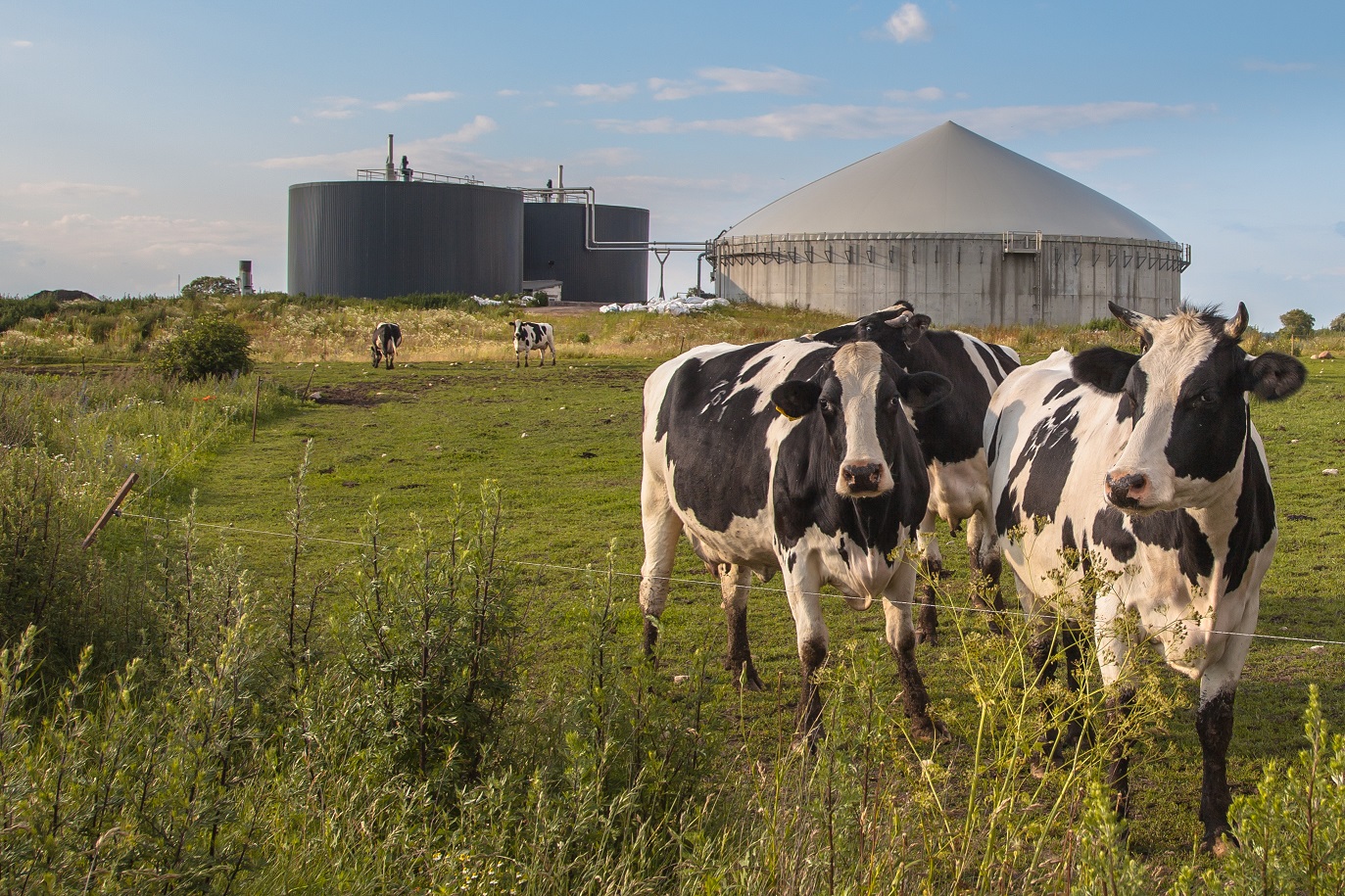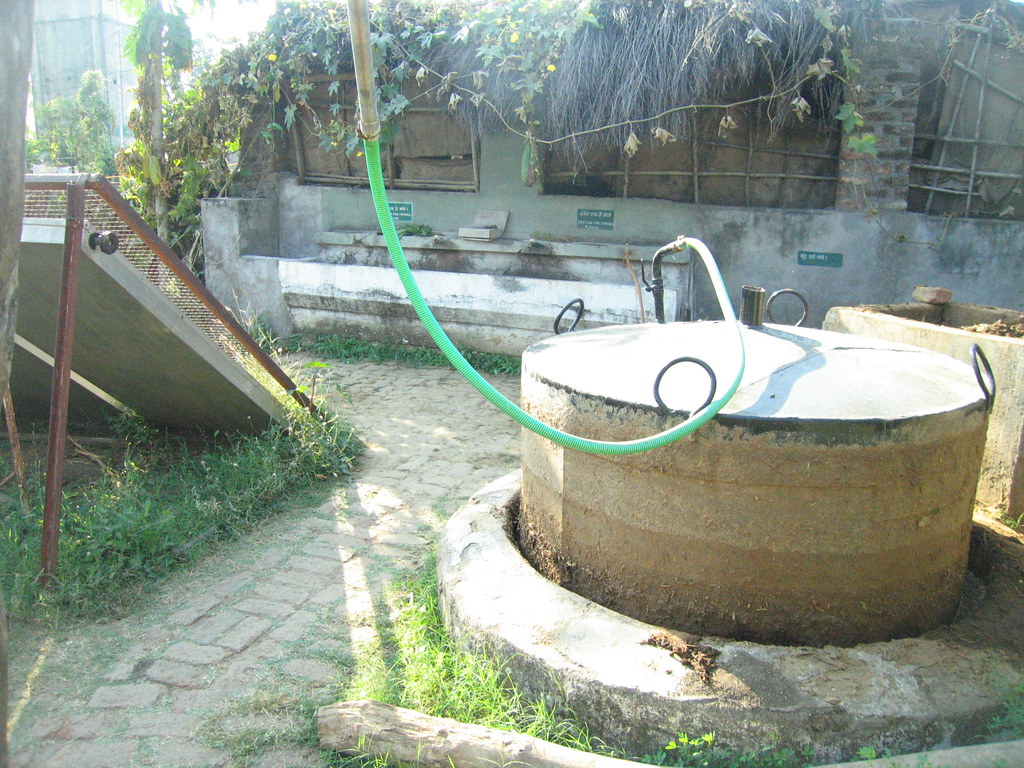
Biogas is a relatively unknown, yet abundantly available type of renewable energy. In its most basic form, biogas can be simply termed as a mixture of gases. Primarily made up of methane and carbon dioxide.
This gas is often produced as a result of the breakdown of organic raw materials. That is leftover as a result of various human activities. These include agricultural waste, cattle manure, municipal waste, sewage, food waste, etc.
This breakdown happens as a result of anaerobic digestion. Which essentially means ‘without oxygen. Various anaerobic organisms or methanogen conduct this process. In both natural and man-made conditions.
For industrial applications, we use a special anaerobic digester, biodigester, or bio-reactors. To create the oxygen-deficient environment needed for this process.
In addition to methane and CO2, this process also creates some contaminants. Like hydrogen sulfide, and siloxanes among others. These compounds need further treatment to remove their toxicity.
On the whole, the production-and-use cycle of biogas is continuous. With an added bonus that it generates no net carbon dioxide.
In this manner, it is a big source of renewable energy. As humans produce billions of tons of organic waste each year. To give you an idea of the scale of this potential energy source. We first have to take a look at how much organic waste is generally generated each year.
Humans alone produce up to 1.3 billion tons of food waste each year. These are just the materials that are leftover from the total amount we grow for consumption. It doesn’t even include the waste produced in the growth process itself.
Even the amount of food we do consume comes out as human waste. Which can add up to 290 million tons at the same time. We can also add the whopping 980 billion tons of cattle and poultry waste to this figure. This is, no pun intended, a lot of shit to deal with.
Add up all the other sources of organic waste, and we have a staggering figure that goes into the trillions. According to the World Biogas Association, if we were able to tap into all this organic waste. It could deliver more than 12,000TWH of potential energy each year.
That translates to roughly 13% of our global energy consumption. It would also mean reducing the same percentage of global greenhouse gas emissions. As we will be repurposing waste that would otherwise be simply dumped in landfills.

Even if we don’t utilize all of this potential organic material. It doesn’t mean that biogas will not be still produced in some form. This is a problem with this process of renewable energy creation. That it can often happen even without direct human intervention.
This kind of biogas production happens automatically. When animals or humans bury their waste in the soil. This creates the natural anaerobic environments needed for special organisms to thrive.
Organisms like methanogens and methanotrophs, which produce methane and other dangerous substances. In special places like wetland soils, oceans, forests, among others.
These places eventually become natural sources of methane. If not recovered properly, this natural biogas is directly released into the air. Which can be harmful to the environment, due to the presence of all these greenhouse gases.
A similar process happens in landfills. Where organic waste often gets buried under plastic waste. Which creates the same anaerobic conditions that lead to the production of biogas.
The emissions from these sites are even worse for the environment. As they also contain residue from other toxic chemicals and gases. Released from the breakdown of chemical and plastic waste.
If not secured properly, these methane emissions can even cause random landfill fires. When the methane reacts with the oxygen above. These fires release immense amounts of pollution into the atmosphere. And also endangers the lives of people living in nearby areas.
To prevent this, we suggest the use of man-made biogas plants. Which is the common name for anaerobic digesters. Which use air-tight tanks to sustain the organism needed for this process.
These tanks can be then filled with organic waste like crops, sewage sludge, and other food waste. Which are then digested by the organic digesters we mentioned above.
This digestion process can be easily accelerated by co-digesting wastewater with other residuals. From the dairy, sugar, and brewery industries, among others.
This co-digestion can also increase the quantity of biogas produced. For example, if we mix 90% wastewater from a beer factory with 10% cow whey, biogas production increases by 2.5 times. Compared to the biogas produced while using waste from the brewery only.
Private Fleets Must Switch to EV: Delhi Government
In specific industrial applications, this biogas production is often done deliberately. To make bio-methane, which can be then used for fuel.
This can be easily done by compressing the biogas. After removing the carbon dioxide from it. This is similar to how CNG is often used to power motor vehicles. This not only reduces our fuel needs. But also qualifies the business for renewable energy subsidies.
In its natural form, biogas is also used to generate electricity and heat. Through various machines that have been specifically created for this purpose. Some utilities even use it as cooking fuel. As it is relatively easy to store and transport.
In this manner, biogas can be a useful source of energy and fuel for us. If we take proper steps to ensure that the infrastructure is in place to make it happen.
The government is doing its part in this process, by building state-run biogas plants. Even a lot of private sector companies are also involved in this enterprise.
The same can also be easily done at a smaller scale, at community and individual household levels. If we can bring ourselves to make some key investments in this technology.
There are plenty of small biogas plants. That can fit into all types of buildings and housing societies. This will help us benefit from our own waste. While also taking away the load from the existing energy grid. Thus, leading us towards an energy-independent future.
Leave a Reply